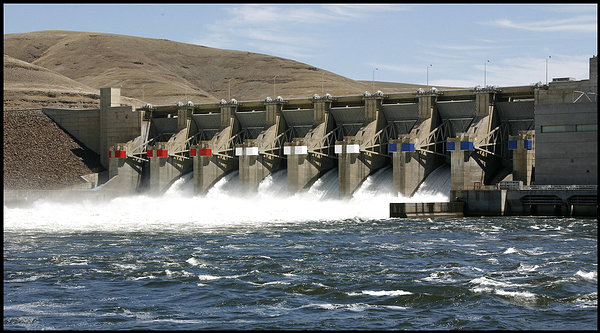forum
library
tutorial
contact

NW Fish Expenses
Hits $782 Million
by Steven Johnson
Electric Co-op Today, July 6, 2015
|
the film forum library tutorial contact |

|
NW Fish Expenses
by Steven Johnson
|
The cost of balancing energy and the environment in the Northwest has reached its highest level
since 2010, a preliminary study of Bonneville Power Administration program has found.
 The power marketer spent $782.3 million on fish and wildlife programs in fiscal 2014, according to a draft analysis released by the Northwest Power and Conservation Council.
The power marketer spent $782.3 million on fish and wildlife programs in fiscal 2014, according to a draft analysis released by the Northwest Power and Conservation Council.
That represents an increase of about $100 million from fiscal 2013, primarily because of a big jump in power that Bonneville purchased to offset a loss of hydroelectric production.
Overall, Bonneville had not spent that much on fish and wildlife since fiscal 2010, when expenditures reached $802.3 million. Most of those charges are passed on to the power marketer's customers, which include 54 electric cooperatives in the Northwest.
"Fish and wildlife costs account for a significant portion of the rate Bonneville charges its wholesale power customers," the report said. "One-third of Bonneville's wholesale rate of approximately $31.50 per megawatt hour is estimated to be associated with its fish and wildlife program."
The council, which reviews issues affecting the Columbia River Basin, said the 2014 numbers bring the total of all of BPA's fish and wildlife efforts since 1978 to $14.5 billion. Those costs constitute almost 32 percent of Bonneville's total power bottom line.
The biggest change in 2014 was in purchased power, which jumped to $196.2 million from $85.8 million in fiscal 2013. Bonneville purchased about 483 megawatts of outside power for its customers in fiscal 2014 during low water conditions or when it reduced generation to protect endangered species of salmon and steelhead.
"Regardless of how Bonneville handles the reduced generation, fish operations to comply with these federal requirements affect Bonneville rates for utility customers," the report said.
The council's review noted that ratepayers are not directly on the hook for the entire $782.3 million in spending. Bonneville receives a federal tax credit for environmental actions unrelated to power.
"Ratepayers were responsible for $678.7 million and the federal government was responsible for the nonpower-purposes share of $103.9 million," the report said.
learn more on topics covered in the film
see the video
read the script
learn the songs
discussion forum
